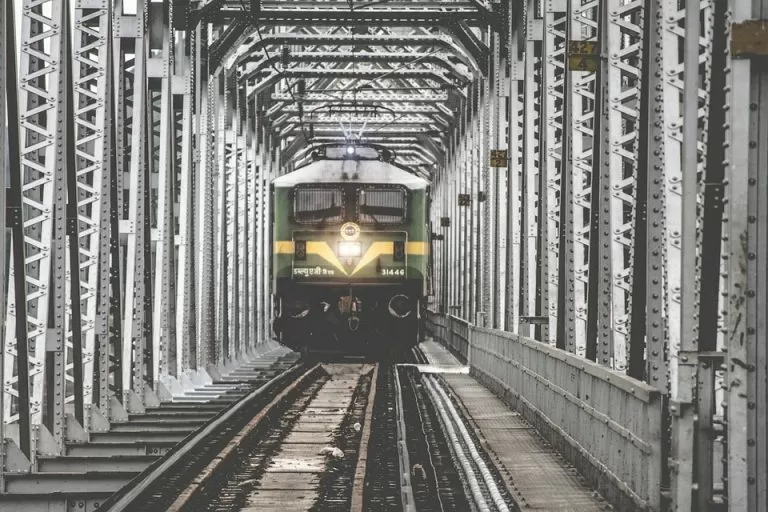Check out our White Paper Series!
A complete library of helpful advice and survival guides for every aspect of system monitoring and control.
1-800-693-0351
Have a specific question? Ask our team of expert engineers and get a specific answer!
Sign up for the next DPS Factory Training!

Whether you're new to our equipment or you've used it for years, DPS factory training is the best way to get more from your monitoring.
Reserve Your Seat Today
As we prepare to broach a new decade, the rail industry is readying itself to achieve continued growth and meet the demands of the modern era. As infrastructure ages and technology advances, rail companies must leverage existing methods and develop new means of meeting the challenges of tomorrow.
To accomplish this, rail companies must anticipate what the coming decade will mean for their business and lay the right tracks to get them where they want to go.
To help, we've created a primer on the top railway technology trends for 2020 and beyond.
While the technologies have changed dramatically in the recent history of railroads, the core goals have remained the same: to transport goods and passengers safely, reliably, and quickly. The railway technologies being developed and implemented now and soon work to accomplish these goals. Largely, they do so by improving and securing railroad communications.
Safety and reliability are the primary concerns of railroad companies, their customers, and their passengers. Speed is a tertiary concern: important, but not as important as reliability. After all, if a passenger is in a hurry, they can choose to take a plane instead.
Reliability allows companies and individuals to depend on train traffic enough that they can plan their schedules around it. If the train is right on time, it's okay that it's not as fast as a cargo plane or a jumbo jet. Both safety and reliability are significantly improved by robust railroad communications networks.
One of the largest shifts in railroad management is the movement now underway to install positive train control (PTC) on railcars in the U.S. in response to federal mandate. This technology will allow for trains to be stopped by remote control at the request of dispatchers. Doing so will arrest runaway trains, preventing accidents like the tragedy at Lac-Megantic. It will also work to prevent train-to-train collisions, unauthorized entry into work zones, and trains moving through improperly aligned switches.
In order for positive train control or other remote control of trains to function effectively, railroads must have powerful, dependable communications networks.
Onboard computers collecting train information - on all trains - must be able to transmit this information effectively to dispatchers. Dispatch can be managed automatically, by human managers, or, most commonly, by a combination of both. By implementing PTC, railroads significantly improve the safety of their freight and passenger lines.
Developing strong, reliable communications networks also helps improve railroad reliability. The onboard computers transmit real-time speed and location data to central management. This information can be used by company personnel to track trains to ensure they arrive on time. The information can be shared with passengers as well, so they can know for themselves if a train is on-time. It can also be used to plan railroad operations in the short- and long-terms.
This constant transfer of information requires a lot of bandwidth. And, especially with PTC, if trains ever lose contact with central control, they stop. This creates additional delays and imposes additional safety concerns - defeating the purpose of these systems in the first place.
As such, rail companies must take care of their communications networks. Communications equipment is often located in remote locations, and therefore prohibitively expensive to monitor in person. Even sending technicians to diagnose a problem, then taking a second trip to repair it, becomes highly expensive, considering that communications downtime is also rail network downtime.
At the same time, communications are subject to difficult, extended environmental conditions, animal incursions, and bored hunters with firearms. As a result, even the most durable equipment will fail at some point; it's just a question of when.
Devices which can answer "when" equipment could be in jeopardy are highly valuable for railroads.
Remote terminal units (RTUs), which consist of attached, customizable sensors, can monitor communications sites remotely for environmental predictors of failure or unauthorized entry, answering "when."
Informed by their RTUs, railroad managers respond accurately to upcoming maintenance and repair needs across their communications network. This keeps comms up and running, which in turn keeps trains on track and on schedule.
Large rail networks, with more than a dozen RTUs, can use master stations to collect their information at a central location.
This allows managers to see the entire communications system at once, on the same computer where they can view their entire rail network.
To fully implement PTC and the information technology that drives improved railroad safety and reliability in 2020 and beyond, rail companies must invest in robust communications networks. In addition to monitoring their trains, they must effectively monitor their communications equipment.
DPS Telecom has a proven track record of strengthening the communications of large railroad networks. Our experts can work to find the ideal remote monitoring solution for your railway's needs. Reach out and get a quote today!
Image courtesy Pixabay